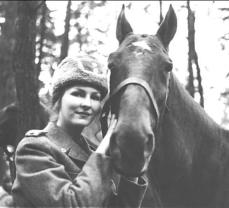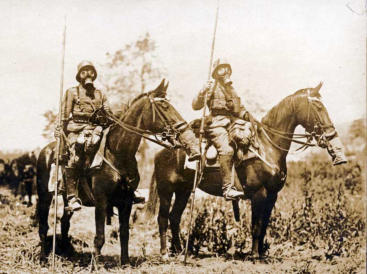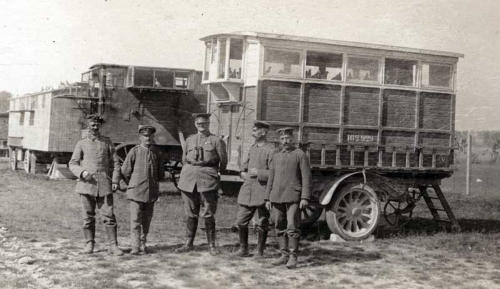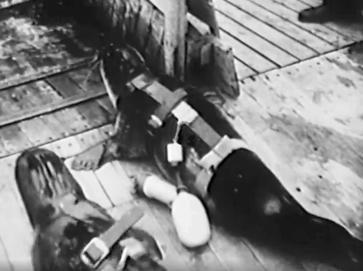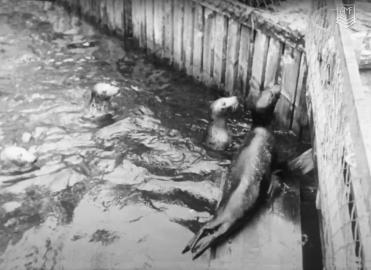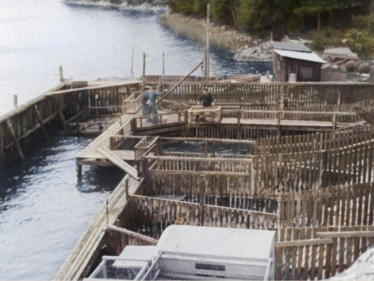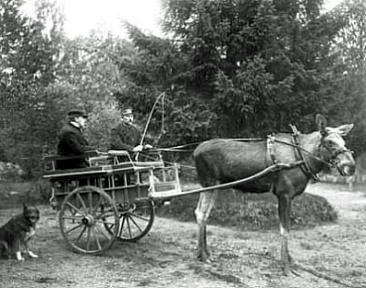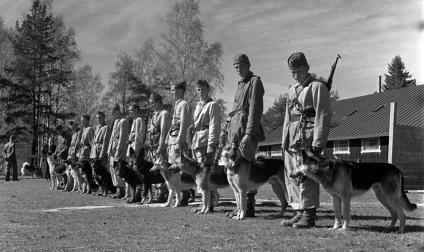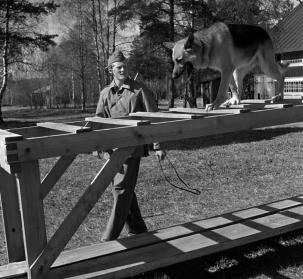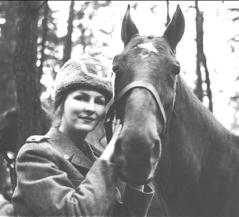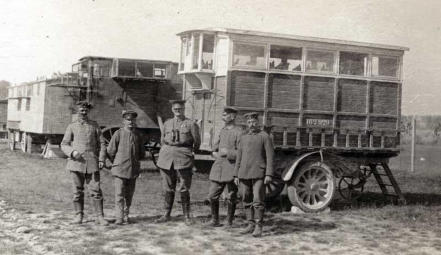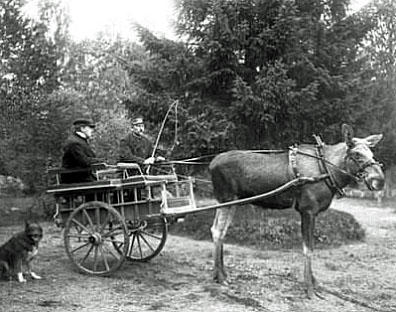

Copyright © Hans Högman 2020-12-18
Animals in War
Service
Animals in War Service
Introduction
Animals have been used in various ways since
ancient times in the military service of different
armies, both as working animals and as companions
for soldiers. Among other things, animals have been
trained to spy on the enemy. Especially from the
outbreak of the First World War until the post-war
period, animals were at the side of soldiers.
Horses
Although horses have been used as draught animals
or pack animals for many thousands of years, it was
not until around the early Iron Age that horses were
bred that were strong enough to carry a human for
any distance. The horse has been used by mounted
units in battle since the 3rd century BC.
When the stirrup began to be used, at the latest in the
7th century AD, the horsemen gained even more
power in battle.
Cavalry is a mounted force that historically used
horses for movement and combat. As a rule, light
cavalry was used mostly to scout enemy troop
movements and to disrupt gatherings and
movements with rapid sorties, then retreat before
the enemy had time to regroup and repel the attack.
Heavy cavalry's main task is to attack enemy
infantry or cavalry to break through the defensive
line and knock out the enemy.
Mounted troops have existed in Sweden for several
hundred years before the "New Age" (starting in the
1500s), ranging from heavily armored "knights" to
lightly equipped scouts.
But it was only during the time of King Gustav Vasa
(Monarch 1523 - 1560) and the creation of a modern
Swedish army that regular cavalry units were raised.
Horses were found in all parts of the army, though
mostly in the cavalry. All officers, regardless of service
branch, had several service horses and all transport
was carried out by draught horses, which were
handled by military drivers.
So not only the cavalry but the whole army depended
on the horse and would largely remain so into the
1940s.
During WWI, cavalry existed mainly on the Eastern
Front. Cavalry played no strategic role in either of the
two world wars of the 20th century, but horses were
important for military and civilian transport. In
Sweden, in 1970, the last procurement of warm-
blooded horses for the Norrland Dragoon Regiment (K
4), which had the last mounted troop of the army,
ceased. Today, three cavalry units remain in the
Swedish army, focused on training military police and
ranger units. They are fully motorized but still
maintain the traditions of the horse era.
Remounting refers to the acquisition of horses for
the needs of the armed forces and remount refers to
a purchased young horse, which has not undergone
training. Remount depots were military
establishments for supplying the armies with young
horses, known as remounts. Remounts were trained
to having a rider, but also to fire, gunpowder smoke,
explosions and other loud noises.
Each Swedish cavalry company had three stallions
and about twenty mares for remount production in
the mid-18th century. In the 1880s, the government
took over responsibility for the breeding of remount
horses of the Swedish mounted and harnessed
regiments. From 1885 onwards, remount depots
were set up to receive all the remount horses. A
special board purchased young horses each year and
sent them to the remount depots to be trained and
be used to saddles. After about a year, the remount
horses were sent to the regiments where they
underwent further training for a year. An example of
a remount depot is Utnäslöt at Strömsholm outside
Köping in Västmanland province.
Other animals used in warfare in a similar way to the
horse are mules, camels and elephants.
Two seals and a navy seaman on the Palm prepare the
training. The Palm experimental station on Gålö,
during WWII. Image: Wikipedia.
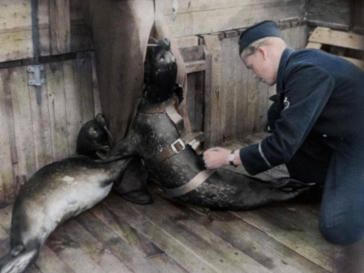
Pigeons
Birds have been used as messengers for thousands of
years, especially pigeons. A message was usually
attached to the pigeon's leg.
The carrier pigeon is a domesticated pigeon used to
relay messages, usually short letters, by releasing the
pigeon and finding its way home to its pigeon loft.
From the Middle Ages until the 19th century, pigeon
post was used for trade, shipping, and, above all, the
armed forces. The pigeon post uses the pigeon's good
orientation, flying ability, and propensity to fly home
when transported away. Carrier pigeons have also
been bred and trained to be even better in these
respects. However, the natural limitations of this
activity have meant that it has never become very
common or regular. Examples of limitations include
the risk of the pigeon being taken by a bird of prey, the
pigeon's need for light winds, and high ambient
temperatures.
A released carrier pigeon will seek to fly to the pigeon
loft where it was bred. It is therefore not possible to
get it to fly to any other locality.
The first military operation with carrier pigeons in
Sweden was at the Karlsborg garrison. In 1887,
pigeons were trained on the Örebro-Karlsborg and
Bråviken-Karlsborg routes. This particular activity was
discontinued at the end of the 1890s.
Until 1949 carrier pigeons were part of the Swedish
Signal Troops' equipment and as late as the Second
World War carrier pigeons were used on a large scale
by the belligerent states.
Two cavalry soldiers with lances, so-called lancers
(uhlans), 1914 - 1918. Both men and horses wear gas
masks. Image: Marinmuseum, ID: D 14988:69.
Military personnel posing in front of carriages with
carrier pigeons (dovecots) during the First World War.
Image: Marinmuseum, ID: D 14988:130.
The Palm experimental seal basins 1943 on Gålö,
during WWII. Image: Wikipedia.
Swedish cavalry soldiers on horseback around 1917,
probably in Tornedalen, Northern Sweden. Photo:
Västergötland Museum, ID: 1M16-A140656.
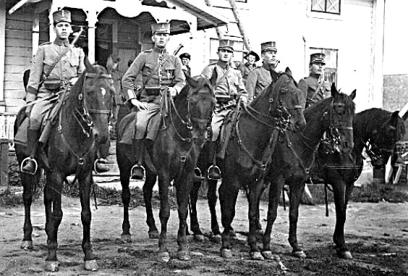
Seals
During the Second World War, Swedish waters were
often violated by submarines from foreign powers.
About 20 Swedish merchant ships were sunk on
Swedish territorial waters between 1940 and 1945 by
foreign submarines, some from the Soviet Union. The
Swedish Armed Forces had developed a sonar early
on, but it did not work well enough. The military
considered how to tackle the problem.
In 1940, a top-secret experimental station called
Palmen (The Palm) was built on the north side of the
Långgarn Bay (Långgarnsfjärden) on Gålö island in
Stockholm's southern archipelago. Here some 20
seals (gray seals and harbor seals) were trained to
find and attach markers to enemy submarines during
the Second World War. The seals had been captured
as pups on the ice in the Gulf of Bothnia and were
then taken to the Gålö station.
On The Palm were the psychologist and behavioral
scientist Valdemar Fellenius and his family, several
conscripts, a cook, animal keeper Tore Glemmefors
from Skansen Zoo, diver Per Edvin Fälting, and
military guards. In total, eight to eleven people
worked under a vow of secrecy, in complete isolation
for four years.
The experimental station was named after the
purpose-built vessel called the Palm, which
transported the seals out to sea for training. The ship
had an opening in the bottom with a sloping plane
where the seals could be released and received.
The basins for the seals were built so that from a
distance they looked like an ordinary dock.
The seals were trained to locate mines and torpedoes
and to search for and mark submarines down to 50
m depth. When a seal came into contact with a
submarine, a device attached to the seal in a harness
would be triggered and the position thus marked. A
buoy with a light signal in the form of a carbide lamp
was then sent to the surface to indicate the location
of the submarine. Fellenius also used magnets with
radio transmitters that stuck to the submarines as
the seals swam past them. At first the seals were
trained on submarine dummies and then the
submarine Sjölejonet (The Sea Lion) acted as the
"enemy" under its commander Bengt Hedlund. The
tests were successful and 19 times out of 20 the seals
found the submarine. The seals eventually became
very tame.
In addition to the seals, Fellenius also trained pigeons
for aerial reconnaissance to detect submarine
periscopes, and the experiments with pigeons
worked well.
In July 1942, two of the station's seals, Pelle and Lotta,
were deployed to search for a Soviet submarine in
the Västervik archipelago on the Swedish east coast
that had torpedoed a merchant ship. However, the
attempt to use the seals had to be aborted due to
bad weather as the custom-built vessel Palmen was
unable to navigate in rough seas. In April 1943, one
of the seals, Pelle, was used in the search for the
Swedish submarine HMS Ulven, which had sunk off
Gothenburg's northern archipelago on the west
coast. However, the seal failed in its mission as it was
deployed in the wrong place, several kilometers from
the accident site. The project, which went under the
code name "Palmen", ended in April 1945, i.e. at the
end of the war. The seal station is now run as a guest-
house.
Sea lions have been used in similar ways in the
United States, among other countries.
Two seals with equipment on their backs. The Palm
experimental station on Gålö, during WWII. Image:
Wikipedia.
Seals in the seal basin at the Palm experimental
station on Gålö, during WWII. Image: Wikipedia.
The custom-built boat "Palmen" gave the seal project
on Gålö its name. The Palm experimental station on
Gålö, during WWII. Image: Wikipedia.
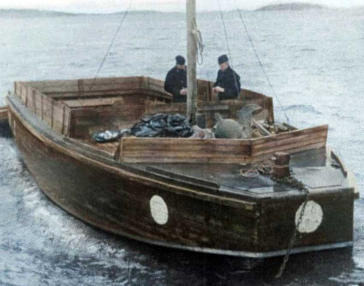
Moose
Olaus Magnus wrote in the middle of the 16th century
in his Nordic history about moose pulling sleds across
the ice at high speed, much faster than horses. They
fed themselves all winter, had the strength of oxen,
and were twice as fast as horses. The moose was a
hardy animal when it came to hunger and thirst and
could run day and night.
Swedish King Karl XI, therefore, entertained plans for a
mounted moose regiment in the latter part of the 17th
century.
However, when escapees began to use moose that
could ride between Ystad and Stockholm in 24 hours,
the plans were shelved. There is no evidence in the
archives that any mounted moose companies, i.e.
moose cavalry, were set up in the Caroline army. Karl
XI's ideas about moose cavalry were abandoned,
among other reasons, because the moose could not
get used to shots and a lot of movement around them.
During the Age of Liberty (1718 - 1772), the patriotic
idea of moose as useful pets was once again put into
practice.
A fundamental difference between moose and horses,
for example, is that the latter live in a hierarchical
herd; domesticated horses simply regard humans as
their leader (or so it is thought). Individual moose may
become tame, but they do not have submission "in
their blood" in the same way.
However, there are examples of several attempts to
tame moose for livestock, as draught animals, and as
milk producers. A well-known example is the orphan
moose “Stolta”, found in the early 1900s near
Älvkarleö in northern Uppland, which was then cared
for and bottle-fed. It became tame and was then used
as a draught animal.
In American, Australian, and New Zealand English this
deer is called moose, in British English, it is called elk. In
American English, elk refers to wapiti deer. The
Swedish term is “älg”.
Stolta the moose pulling a cart around 1908. Image:
SLU.
Stolta the moose pulling a sled around 1908. Image:
Upplandsmuseet.
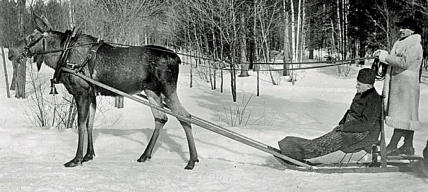
Dogs
During the First and Second World Wars, the use of
working dogs for special military purposes spread.
They were used for patrolling and guarding, and there
were also medical orderly dogs, messenger dogs, and
mine dogs.
The Messenger Dog was a military service dog used to
send messages between military units in wars. Mine
dogs are used in mine clearance. The dog is many
times more effective than humans for this purpose
and, unlike a metal detector, can tell the difference
between metal and explosives.
The military guard dog differs from police patrol dogs,
which are trained to protect the handler. Military
guard dogs must be able to detect and track the
sounds of strangers in the area being guarded and
the scent of strangers. The Government Dog-training
School was a dog-training school under the Ministry
of Health and Social Affairs that operated in various
forms from 1978 to 1991. The dog-training school was
located in the Sollefteå garrison in Sollefteå town.
From its inception in 1936, the Army was the principal.
In 1962 the name was changed to the Army Dog-
training School (Swe: Arméns hundskola). In 1971, the
school became an independent agency under the
Ministry of Defense and changed its name to the
Defense Dog-training School. In 1978, the name was
changed again, to the Government Dog-training School,
and at the same time the Ministry of Health and Social
Affairs took over the management of the school.
After the company was incorporated in 1991, Sollefteå
town became a shareholder the following year and
the name was changed to Sveriges hundcenter AB. In
1994 the Government withdrew. Since 2005, the dog
breeding station in Sollefteå handles its own breeding
of German shepherd dogs. Today, the Swedish
Armed Forces Dog Training Unit, FHTE, is as of 2022
part of the Air Force Air Combat School. The canine
training centers are based outside Märsta and in
Kungsängen north of Stockholm and at the dog
breeding station in Sollefteå.
Between 1911 and 1914, the Swedish army began
experiments with sled dogs and messenger dogs at
the Västernorrland Infantry Regiment in Sollefteå.
These dogs were of the Airedale terrier breed. In the
1920s, the experimental work with draught dogs was
resumed, and in the 1930s it was extended to include
messenger and medical orderly dogs. After 1936,
guard dogs and, in the 1940s, mine dogs began to be
trained. In 1941, formal cooperation with the police
was initiated to train guard dogs, which had
previously been carried out on an experimental basis.
Between 1947 and 1953, the dog-training school
developed methods for testing the suitability of
service dogs for the various specializations. In the
1950s, the army draught dogs were abolished.
The Army Dog-training School in Sollefteå, May 1950.
Photo: Norrlandsbild. Image: Sundsvalls museum, ID:
SuM-foto027909.
Training of dogs, Army Dog-training School in Sollefteå
in May 1950. Photo: Norrlandsbild. Image: Sundsvalls
museum, ID: SuM-foto027909.
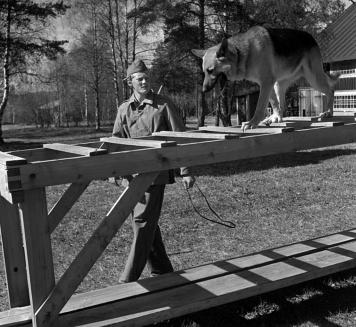
Dolphins
Dolphins are aquatic mammals. Dolphin intelligence
means they can learn to identify different types of
objects, and with superior swimming skills, they
search an area much faster than a human diver can.
The Soviet Union conducted training of dolphins and
sea lions in the Black Sea for military purposes. When
the Soviet Union collapsed, the dolphins trained in
Crimea became the property of independent Ukraine.
The animals were trained under great secrecy for
various rescue missions and to be used in the search
for sea mines. They were also trained for secret
military attack missions. Speculation has centered on
exactly what tasks the dolphins were trained for; for
example, kamikaze missions against submarines,
mine laying, and killing attack divers have been
mentioned.
Dolphins have also been used in similar ways in the
US, including to identify and sweep sea mines. There
are also dolphins trained to rescue divers.
Swedish Blue Star, SBS
SBS was established in 1917 to care for the Army
horses in the field. The service’s first name was the
Swedish Red Star “Swe: Svenska Röda stjärnan”
(compare to the Red Cross). The mission of the Red
Star was to be the animals’ counterpart to the Red
Cross. Injured Army horses suffered badly during
WWI and an international federation was established
for the care of horses in battle conditions.
The Swedish Red Star educated and trained so-called
“Red Star nurses” for the care of horses, i.e. medical
orderlies for the Army horses. The Red Star
established also hospital stables, manufactured
horse bandages, and acquired medical instruments
and other equipment.
In 1940, during the Finnish Winter War with the
Soviets, the Swedish Red Star contributed with an
ambulance for horses. In Finland, the name of the
service, Red Star, wasn’t suitable since this was the
symbol used by the Soviet Army. On 1 July 1941, the
service, therefore, changed its name to the Swedish
Blue Star (Swe: Svenska Blå Stjärnan).
The image to the right
shows a female member
(Birgitta Gustafsson,
Stockholm) of the
Swedish Blue Star
wearing their uniform.
Photo: Stig Herbst (1916 -
1991). Image: Karlsborgs
fästningsmuseum, ID:
KBGF.010607.
